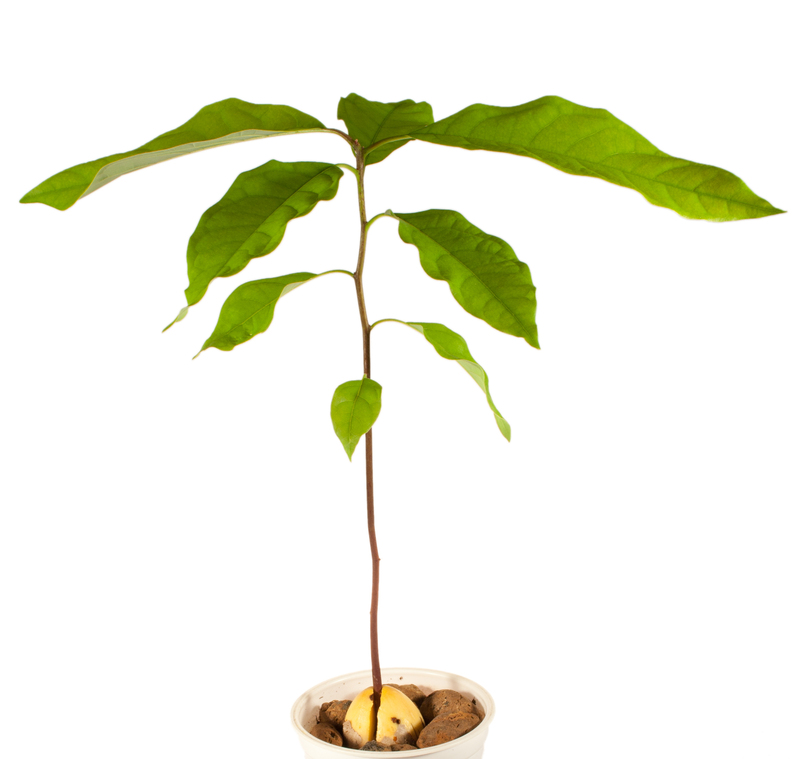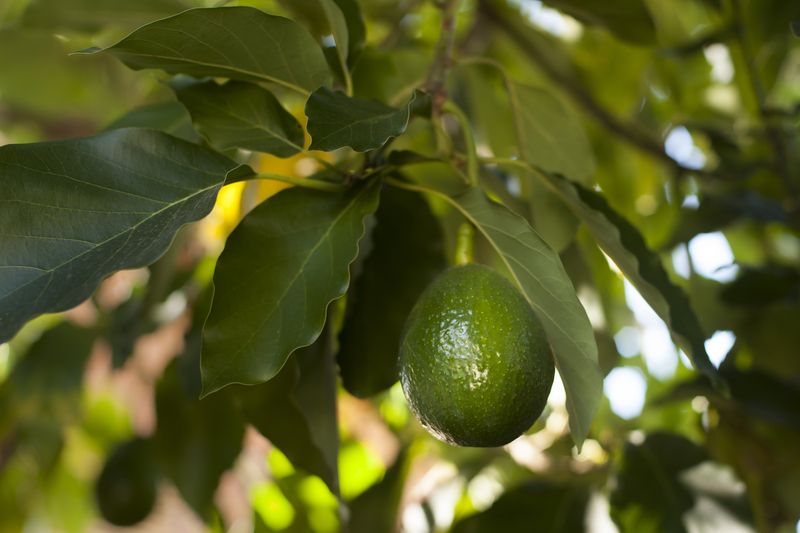Waste Not: Making Rich Earth from Organic Debris
Posted on 08/09/2025
Waste Not: Making Rich Earth from Organic Debris
Turning "waste" into wealth lies quite literally beneath our feet. Every year, households and communities generate massive amounts of organic debris - from food scraps to yard trimmings - much of which ends up buried in landfills. But what if we could easily transform this organic waste into rich, fertile soil that nourishes gardens and supports the health of our planet? Welcome to the world of composting and soil-building, where nothing is wasted and everything cycles back to benefit the earth and ourselves.
Understanding the Value of Organic Debris
Organic debris comprises plant-based materials like fruit and vegetable peels, coffee grounds, eggshells, dead leaves, grass clippings, and woody trimmings. It also includes biodegradable paper, untreated wood chips, and certain animal manures. When properly managed, these materials can be converted into rich earth or compost, a potent resource for gardeners, farmers, and anyone interested in regenerative living.
Sadly, much of this precious matter is treated as trash. In the U.S. alone, food waste accounts for up to 30-40% of the food supply, most of which ends up in landfills. There, it generates methane - a greenhouse gas far more potent than carbon dioxide. By contrast, composting organic debris redirects this "waste" into a productive, sustainable cycle. Let's explore how to efficiently turn organic matter into valuable soil.

The Science Behind Making Rich Earth
Composting is the process of breaking down organic materials in the presence of air and moisture, resulting in a nutrient-rich product known as humus, or simply, rich earth. Whether you call it composting, soil-building, or creating humus, the aim is the same: convert organic debris into a safe, stable, and fertile material.
Key Ingredients for Making Rich Soil from Organic Waste
To create rich earth from organic debris, you need four essential ingredients:
- Carbon-rich "browns": Dried leaves, straw, shredded paper, cardboard, wood chips
- Nitrogen-rich "greens": Fruit and vegetable scraps, coffee grounds, grass clippings, manure
- Water: Moisture is critical to support microbial activity
- Oxygen: Aeration ensures decomposition stays aerobic and odor-free
A balance of browns to greens is crucial. An ideal ratio is about 3:1 by volume (browns to greens). This ensures fast, efficient breakdown and avoids unpleasant smells, attracting fewer pests.
The Methods: Turning Organic Debris into Fertile Ground
1. Traditional Composting
The classic outdoor compost pile (or bin) is an approachable and effective way to process organic debris. Here's how to set it up:
- Location: Choose a shaded, well-drained spot.
- Layering: Alternate layers of browns (high-carbon) with greens (high-nitrogen).
- Moisture: Keep the pile as moist as a wrung-out sponge.
- Aeration: Turn or mix the pile every 1-2 weeks to introduce oxygen.
- Time: In three to six months, your pile will yield dark, crumbly compost--the rich earth your plants crave.
2. Vermicomposting (Worm Composting)
This method uses special worms (usually Eisenia fetida, or red wigglers) to transform food waste into incredibly rich, microbe-filled castings. An indoor or shaded outdoor bin provides a controlled environment, making this ideal for smaller spaces.
- Bin: Use a breathable, shallow bin with drainage.
- Bedding: Start with moist shredded newspaper or coconut coir.
- Feeding: Add food scraps (chopped into small pieces), burying them beneath the bedding.
- Maintenance: Keep bedding damp and avoid overfeeding. Harvest castings every 2-3 months.
3. Bokashi (Fermentation Composting)
Bokashi is an anaerobic process that "pickles" food waste using specialized microbes. It's perfect for households wanting to process challenging organic debris (like cooked foods or dairy).
- Bucket: Use an airtight bin with a spigot for draining liquid.
- Inoculant: Layer food waste with "bokashi bran" (microbe-inoculated bran) until full.
- Fermentation: Seal and let ferment for two weeks.
- Final Step: Bury fermented materials in your garden or compost pile for rapid breakdown.
4. Sheet Mulching or "Lasagna" Gardening
This simple method involves layering organic debris directly onto the ground, mimicking nature's forest floor to build new soil.
- Layer: Start with cardboard or newspaper to suppress weeds, then alternate nitrogen-rich and carbon-rich layers.
- Water: Moisten each layer as you build.
- Finish: Top with mulch or compost and plant directly into the new, rich earth after a few months.
What Goes In? The Art of Selecting Organic Debris
Not all organic material is ideal for creating high-quality compost or soil. Here's a handy guide:
- YES: Vegetable peels, fruit rinds, coffee grounds, tea bags (without plastic), crushed eggshells, grass clippings, leaves, sawdust (from untreated wood), shredded cardboard, hair, animal manure (from herbivores).
- NO: Meat, dairy, bones, fats/oils, diseased plants, pet waste, glossy paper, treated wood chips.
Tips for Successful Organic Debris Management
- Chop or shred large debris for faster breakdown.
- Balance "greens" with plenty of "browns" to prevent odors and sliminess.
- Keep the pile damp but not soggy--for healthy microbial activity.
- Turn piles regularly to introduce oxygen and speed up decomposition.
- Wait until compost is dark, crumbly, and earthy-smelling before using on plants.
The Benefits of Creating Rich Earth from Organic Waste
For Your Garden
- Improved soil structure: Compost increases aeration and drainage while helping soil retain essential moisture.
- Natural nutrients: Releases slow-release nitrogen, phosphorus, potassium, and vital micronutrients for plants.
- Beneficial microbes: Adds life to the soil, supporting plant health and immunity.
- Fewer weeds and diseases: Proper compost kills weed seeds and pathogens, reducing garden problems.
For the Environment
- Less landfill waste: Diverts organic materials from landfills, reducing methane emissions.
- Carbon capture: Finished compost helps sequester carbon in soils, combating climate change.
- Healthier water systems: Compost enriches topsoil, improving water infiltration and reducing runoff.
For Your Wallet
- Reduces need for chemical fertilizers and expensive soil amendments.
- Boosts yields and plant health, increasing your garden's productivity.
Composting at Home: Start Small, Grow Big
Even apartment dwellers or those with limited outdoor space can make rich earth from their organic debris. Here's how:
- Countertop compost pails collect scraps before transferring to a community drop-off or pick-up service.
- Worm composting bins thrive under kitchen sinks or in closets.
- Bokashi systems process kitchen waste with minimal space and effort.
For those with more room, consider a tumbler or build a basic three-bin compost system. Share surplus compost with neighbors or use it around trees, shrubs, and veggies.
Community Solutions to Organic Waste
Municipalities and local organizations are increasingly offering curbside organic debris collection programs, community compost bins, and workshops. Check with your local waste authority or extension office for options to divert your kitchen and yard waste and help support local soil health initiatives.
Troubleshooting: Common Composting Challenges
- Odors? Add more browns, increase aeration, and avoid fats/oils.
- Pests? Bury fresh scraps, use covered bins, and exclude animal products.
- Slow decomposition? Chop materials, add more greens, and keep moist/aerated.
- Pile too wet? Toss in dry leaves or shredded paper to soak up moisture.

Myths and Realities about Making Rich Soil from Organic Debris
- "Composting takes too much time." Truth: Active piles or bins can produce finished compost in several months with minimal work.
- "Compost bins are smelly or attract rodents." Truth: When managed properly (no meat, sufficient browns, regular mixing), composting is clean and odor-free.
- "Only gardeners need to compost." Truth: Everyone benefits from keeping organic waste out of landfills--healthy soils mean healthy communities.
The Future: Regenerating Soil and Resources
Soil is a living resource, not a static dirt. Making rich earth from organic debris is about healing our relationship with the natural cycles that sustain life. By diverting kitchen and yard waste, we not only reduce landfill use and emissions, but also help regenerate soil, increase food security, and beautify our landscapes.
Final Thoughts: Waste Not, Want Not
Whether you're a backyard gardener, an urban apartment dweller, or part of a larger community, transforming organic debris into rich, life-giving earth is a wise investment for your garden, your neighborhood, and the planet at large. Start small: collect your food scraps, try out a composting method that fits your lifestyle, and enjoy the incredible benefits of a truly circular system.
The next time you peel a carrot, prune a shrub, or mow your lawn, remember: you hold in your hands the ingredients for tomorrow's rich earth. Waste not, and grow the future!

